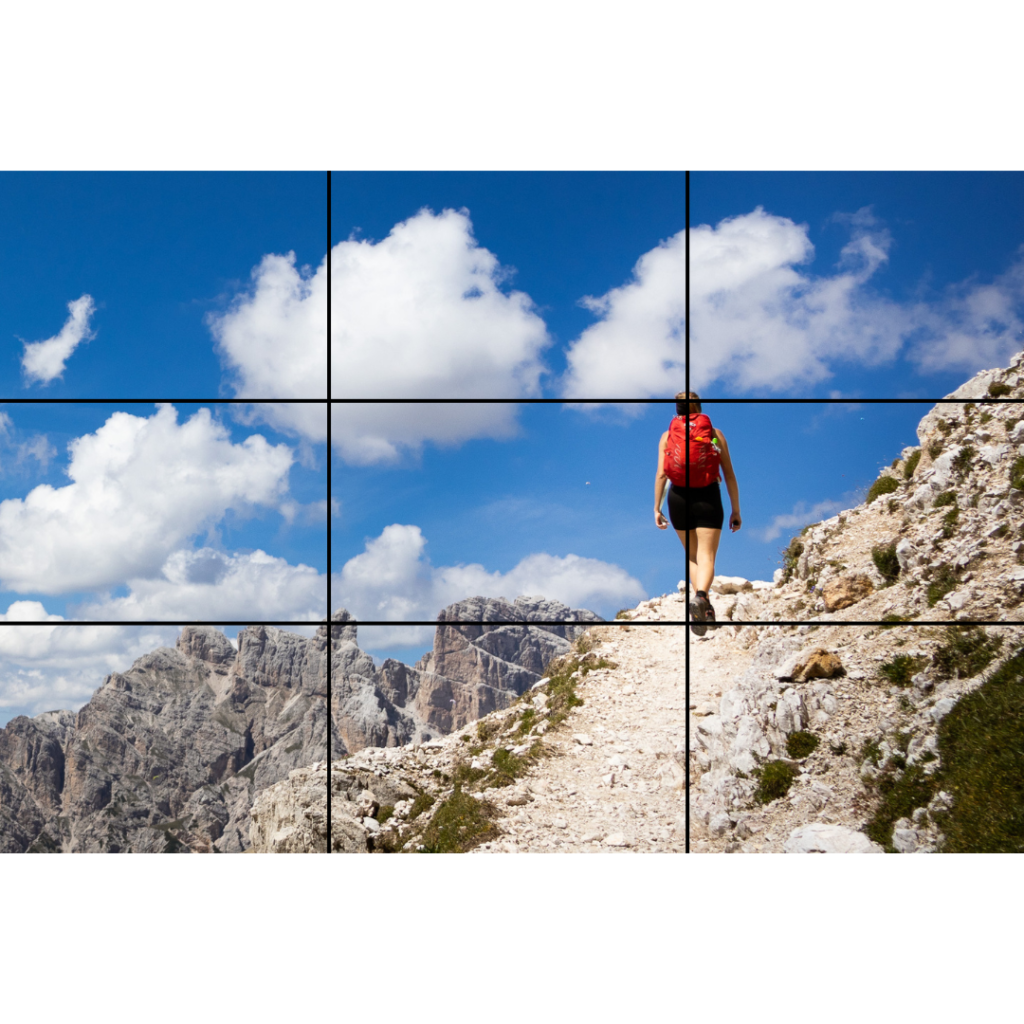This simple yet powerful technique is a go-to for photographers, whether you’re just starting or have years of experience. It’s all about creating balance, leading the viewer’s eye, and adding a sense of harmony to your images.

What Is the Rule of Thirds?
The Rule of Thirds is a compositional guideline that divides your image into nine equal parts by drawing two equally spaced horizontal lines and two equally spaced vertical lines. Imagine a tic-tac-toe grid over your photo. The idea is to place the most important elements of your scene along these lines or at their intersections, known as power points.
By positioning your subject off-center, you create a more dynamic and visually interesting composition, compared to placing the subject dead center in the frame. It helps guide the viewer’s eye naturally through the image and enhances the balance between the different elements.


Why Does It Work?
The Rule of Thirds works because it aligns with the natural way we perceive visual information. Human brain tends to favor asymmetry over perfect symmetry when scanning an image. This is because asymmetrical compositions, like those created using the Rule of Thirds, provide a sense of movement and energy, which keeps the viewer engaged longer.
By placing important elements along these gridlines or at the intersections, you create a composition that feels more balanced and dynamic, encouraging the viewer’s eye to explore the image naturally. It also helps avoid “dead center” compositions, which can sometimes feel too static or predictable.
How to Use the Rule of Thirds
Enable the Grid: Most cameras and smartphones allow you to display a Rule of Thirds grid in your viewfinder. This makes it easier to align your subject with the lines or intersections while composing your shot.
Place Key Elements Along the Lines: Position your subject, horizon, or other important elements of the composition along one of the grid lines, instead of dead center. For example:
-
- In landscape photography, you might place the horizon along the lower or upper third of the frame, rather than directly in the middle.
- In portrait photography, the subject’s eyes often align with one of the top two intersections, creating a more dynamic and intimate shot.
Lead the Viewer’s Eye: Use the grid lines to guide where the viewer’s attention should go. Leading lines in your scene, such as roads, rivers, or paths, can be aligned with the grid to draw attention to the subject.

When to Break the Rule
While the Rule of Thirds is a great guideline, it’s not an absolute rule. Some scenes may benefit from breaking it. Centered compositions or even totally off-grid placements can sometimes create striking and powerful images. The key is to understand the rule before breaking it intentionally for creative effect.
The Rule of Thirds helps create visual harmony by leaving negative space in certain parts of the frame, which can make the subject stand out even more. Whether in landscape photography, portraits, or action shots, this rule subtly guides the viewer into the image and gives it a more dynamic, natural feel. While it’s not a hard rule, it serves as a foundational guideline for creating well-composed and compelling images.